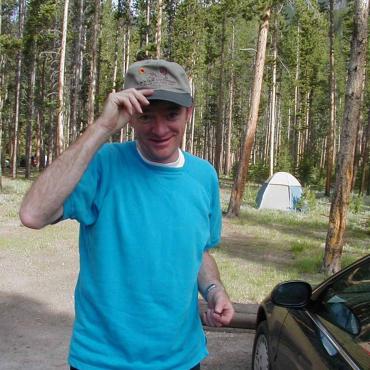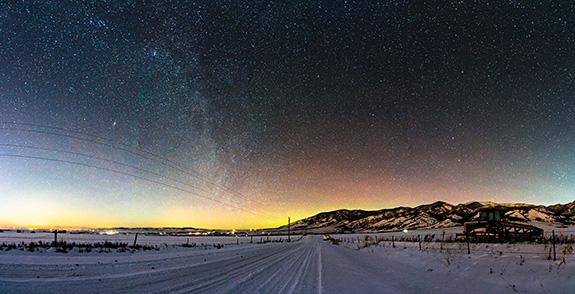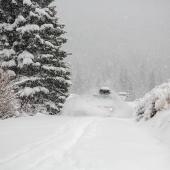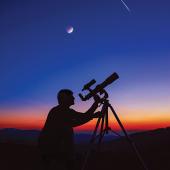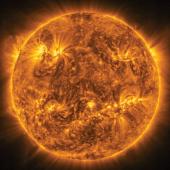Blue Moons Rising
Winter’s astronomical bucket list.
Snowbound Montana offers many antidotes for cabin fever; you just need to bundle up, get out, and do things. One such venue is the winter night sky, where the stars shine bright and hard. There’s a lot going on “out there,” so put the following on your winter astronomical bucket list, and enjoy.
The Geminid Meteor Shower peaks on the night of December 13, and it’s often the best shower of the year. Under good conditions, several dozen meteors per hour can be seen flashing across the sky from the direction of the constellation Gemini, which rises in the northeast just north of Orion by 10pm and is practically overhead by 3am. A waning crescent moon rises just after 3am, but its puny radiance shouldn’t much interfere with the view.
That means it’s time for a shower party. Find some friends, dress warmly, and recline on lawn chairs (so you’re off the likely snow) aimed northeast, and watch the meteors fly. The Geminids derive from an odd sun-hugging asteroid named Phaethon whose dusty orbit we cross this time of year, and many of these dusty bits burn brightly. If it’s clear, enjoy the show!
This winter is loaded with Supermoons—full moons on astronomical steroids. Whenever the moon comes to full around its perigee—the place in its orbit where it’s closest to Earth—it will appear bigger than average and thus brighter than average, making for splendid moonlit nights. Such Supermoons occur on December 3 (okay, technically not winter yet, but it will probably feel like it) and on January 2—coincident with the holiday season.

That makes these nights (if clear) perfect for a walk in the crisp air with a special someone, with “the moon on the breast of the new-fallen snow” giving a “luster of midday to objects below.” If there is indeed snow, the landscape will look like a photographic negative—all black and white. This is an excellent time to plan a nighttime ski tour by the light of the moon.
January also hosts a Blue Moon, the second full moon of any month. Occurring on January 31, it’s not actually blue, but it’s normally rare—except for in 2018. There’s another blue moon at the end of March.
But what’s really special about the January 31 Blue Moon is not that it will turn blue, but that it will turn red. For the moon will undergo a Total Lunar Eclipse. It all happens in the wee hours of the morning on the 31st before sunrise, with the main phase of the eclipse beginning just before 5am with the moon in the west, when it starts into the umbra, the dark central part of the Earth’s shadow in space.
The moon slips completely into the umbra at 5:52am local time, totally eclipsed and decidedly red—a strange sight indeed hovering over the western horizon, and a good excuse to organize a pre-dawn fatbike ride up Peets Hill, complete with an early outdoor breakfast. The total phase ends at 7:08am, as the moon begins to slip back out of the umbra, and the moon sets for us about 45 minutes later, still on the way out, as the sun rises.
Finally, enjoy a fine Planetary Conjunction with your morning coffee before sunrise on January 6. Jupiter and Mars will appear to lie right next to each other in the southeastern sky, Jupiter the much brighter of the pair. Binoculars will give a nicely enhanced view.
Jim Manning, formerly the executive director of the Astronomical Society of the Pacific in San Francisco, lived outside Bozeman for many years and has returned to live here once again.

